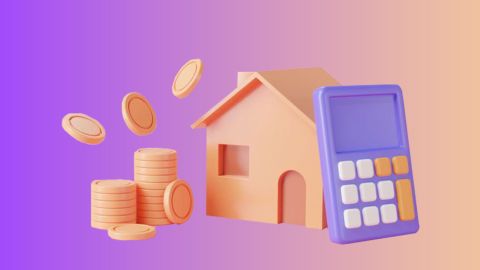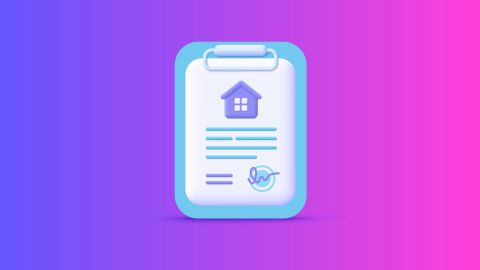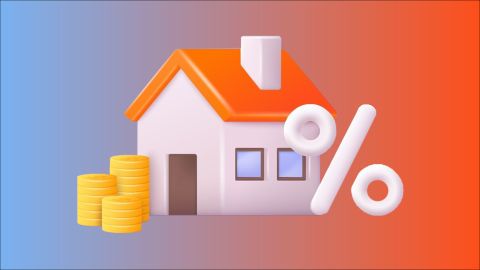House rent allowance, commonly known as HRA, is a significant component of an employee’s total salary package. It is provided by employers to help employees meet the cost of rented accommodation. Under the old tax regime, individuals can claim tax exemption on a portion of their HRA as per Section 10(13A) of the Income Tax Act. However, to avail of this benefit, employees must maintain proper rent receipts and rental documentation. It’s important to note that this exemption is not applicable under the new tax regime, where the entire HRA received becomes taxable as part of your income.
Homeowners can also optimise their property investments by utilising home loans to gain tax advantages, with deductions available for both principal repayments (under Section 80C) and interest payments (under Section 24(b)). This strategic approach not only fulfils housing requirements but also leads to substantial tax savings.
What is house rent allowance?
HRA, or house rent allowance, is an amount paid by employers to employees to assist with their rental housing expenses. Although it forms part of the taxable salary, a portion can be exempt under Section 10(13A) of the Income Tax Act when following the old tax regime. The exemption amount depends on factors such as the employee’s salary, rent paid, and city of residence. Under the new tax regime, however, this exemption is not available, meaning the entire HRA amount is added to taxable income. Therefore, employees should carefully evaluate both regimes before opting for one.
Who can claim HRA exemption?
HRA exemption can be claimed by both salaried and self-employed taxpayers, though the applicable sections differ for each.
For salaried individuals
- Employees receiving HRA as part of their salary package can claim tax relief under Section 10(13A) of the Income Tax Act.
- The exempt portion is calculated based on specific conditions that take into account the rent paid, city of residence, and salary components.
- The amount that qualifies for exemption is not included in taxable salary, reducing overall tax liability.
For self-employed individuals
- Even if you are not a salaried employee, you can still claim a deduction for rent paid under Section 80GG.
- This deduction applies to those who do not receive HRA from an employer.
- However, to claim this benefit, you must not own any residential property at your place of work or residence.
In short, salaried employees can claim HRA exemption through Section 10(13A), while self-employed individuals can benefit through Section 80GG, provided they meet the required conditions.
While renting offers flexibility and tax benefits through HRA, owning a home provides long-term stability and wealth creation. If you are ready to transition from renting to homeownership, a home loan from Bajaj Finserv can help you achieve this milestone with competitive interest rates starting at 7.45%* p.a and flexible repayment options. Check your home loan eligibility today. You may already be eligible, find out by entering your mobile number and OTP.
House rent allowance exemption limit
Under Rule 2A, the HRA exemption is calculated as the lowest of the following three values. The exemption differs depending on whether you reside in a metro or non-metro city.
Criteria |
Metro cities (Delhi, Mumbai, Chennai, Kolkata) |
Other cities |
Actual HRA Received |
Actual HRA received |
Actual HRA received |
Percentage of salary |
50% of salary |
40% of salary |
Rent paid minus 10% of salary |
Rent paid minus 10% of salary |
Rent paid minus 10% of salary |
Note: Salary here includes Basic Pay + Dearness Allowance (if part of retirement benefits) + Commission (as a percentage of turnover).
Example:
Let’s understand this through an example.
Mr. Ankush, working in New Delhi, pays Rs. 10,000 as monthly rent. His monthly basic pay is Rs. 25,000 and DA is Rs. 2,000. During the year, he receives Rs. 1 lakh as HRA.
Here’s how his HRA exemption is determined:
- HRA received: Rs. 1,00,000
- 50% of salary (Basic + DA): 50% of Rs. 3,24,000 = Rs. 1,62,000
- Rent paid – 10% of salary: (Rs. 1,20,000 – Rs. 32,400) = Rs. 87,600
The lowest value, i.e., Rs. 87,600, will be exempt from tax. The remaining HRA amount will be taxable as per applicable slab rates. Under the new tax regime, however, the entire Rs. 1 lakh would be taxable.
How to claim HRA u/s 10(13A)?
To claim HRA exemption under Section 10(13A), ensure that:
- You are a salaried employee receiving HRA from your employer.
- You live in rented accommodation and pay rent regularly.
- Rent receipts and payment proofs are submitted to your employer.
- HRA is included as a part of your salary structure (CTC).
- The exemption amount is calculated considering your salary, HRA received, rent paid, and whether you reside in a metro or non-metro city.
These documents must be presented to your employer or attached while filing your income tax return.
Methods for calculating house rent allowance (HRA)
The computation of HRA involves several methods, each with specific conditions and factors to consider. The commonly employed methods include:
- Actual HRA received: This method entails calculating the actual HRA amount received from the employer. The deductible amount is determined as the minimum of the following: the actual HRA received, 50% of salary (for individuals residing in metro cities) or 40% of salary (for those in non-metro cities), and the amount by which rent paid exceeds 10% of salary.
- Rent paid minus 10% of salary: Under this approach, the difference between the rent paid and 10% of the salary is considered for HRA deduction. The least of the following amounts is deductible: rent paid minus 10% of salary, actual HRA received, or 50% of salary (for metro cities) and 40% of salary (for non-metro cities).
- 50% of salary: The 50% of Salary method allows for considering 50% of the individual's salary for HRA deduction if they reside in metro cities. For non-metropolitan cities, the percentage is reduced to 40%.
Eligibility criteria to claim HRA tax deductions
House Rent Allowance (HRA) is a benefit provided to salaried employees to help them cover rental expenses. However, certain conditions must be met to claim HRA deductions:
- Salary structure: HRA must be a part of your salary package.
- Rental agreement: You should be living in a rented house and paying rent to the owner. You cannot claim HRA if you live in your own house.
- Rent receipts: You need to submit valid rent receipts as proof of payment to your employer.
- No claim for joint property: HRA cannot be claimed if you are renting a property owned by your spouse or self.
- PAN of landlord: If annual rent exceeds Rs. 1 lakh, you must provide the landlord’s PAN.
Understanding these eligibility criteria helps ensure hassle-free HRA claims.
Documentation needed to claim house rent allowance (HRA)
To claim HRA benefits, individuals are required to provide specific documents, which include:
- Rent receipts serve as evidence of rent payments made.
- Lease agreement or rent agreement with the landlord.
- PAN card details of the landlord, particularly if the annual rent exceeds a specified threshold.
- Salary slips that clearly indicate the HRA component of the salary.
Maximum HRA limit claimable under the Income Tax Act
The amount of HRA (House Rent Allowance) you can claim as a tax deduction is the lowest of the following three:
- Actual HRA received as part of your salary.
- 50% of your basic salary, if you reside in a metro city (40% for non-metro cities).
- Rent paid minus 10% of basic salary.
By using these criteria, you can determine your maximum HRA deduction. This calculation helps optimize your tax savings. To ensure accuracy, you can consult a tax professional or use an HRA calculator.
Utilising home loans for tax savings
Apart from HRA, home loans provide substantial tax advantages. Principal repayments qualify for deductions under Section 80C, and interest payments are eligible for deductions under Section 24(b) of the Income Tax Act. By strategically leveraging home loans, individuals can fulfil their housing goals and benefit from significant tax savings, enhancing financial stability for the future.
Making the shift from paying rent to building equity in your own property is a financially prudent decision. With a home loan from Bajaj Finserv, you can access funding up to Rs. 15 Crore* with tenure options extending up to 32 years, making homeownership more affordable than ever. Check your eligibility now. You may already be eligible, find out by entering your mobile number and OTP.
Secure your dream home with a home loan from Bajaj Housing Finance
If you are on the path to owning your dream home and need financial support, consider opting for a home loan from Bajaj Housing Finance, a wholly-owned subsidiary of Bajaj Finance. Bajaj Housing Finance offers tailored funding solutions designed to meet your specific housing requirements, ensuring a seamless and stress-free homeownership journey. Additionally, if you already have an existing home loan and are seeking improved terms and benefits, transferring it to Bajaj Housing Finance could be a wise decision. Benefit from streamlined loan transfers and enjoy advantages like swift disbursal, competitive interest rates, and extended repayment options.
Start your journey towards owning your dream home by applying for a home loan today. You may already be eligible, check your pre-approved offers by entering your mobile number and OTP.




